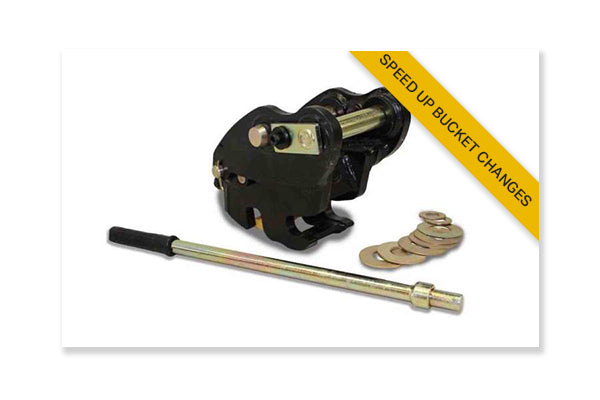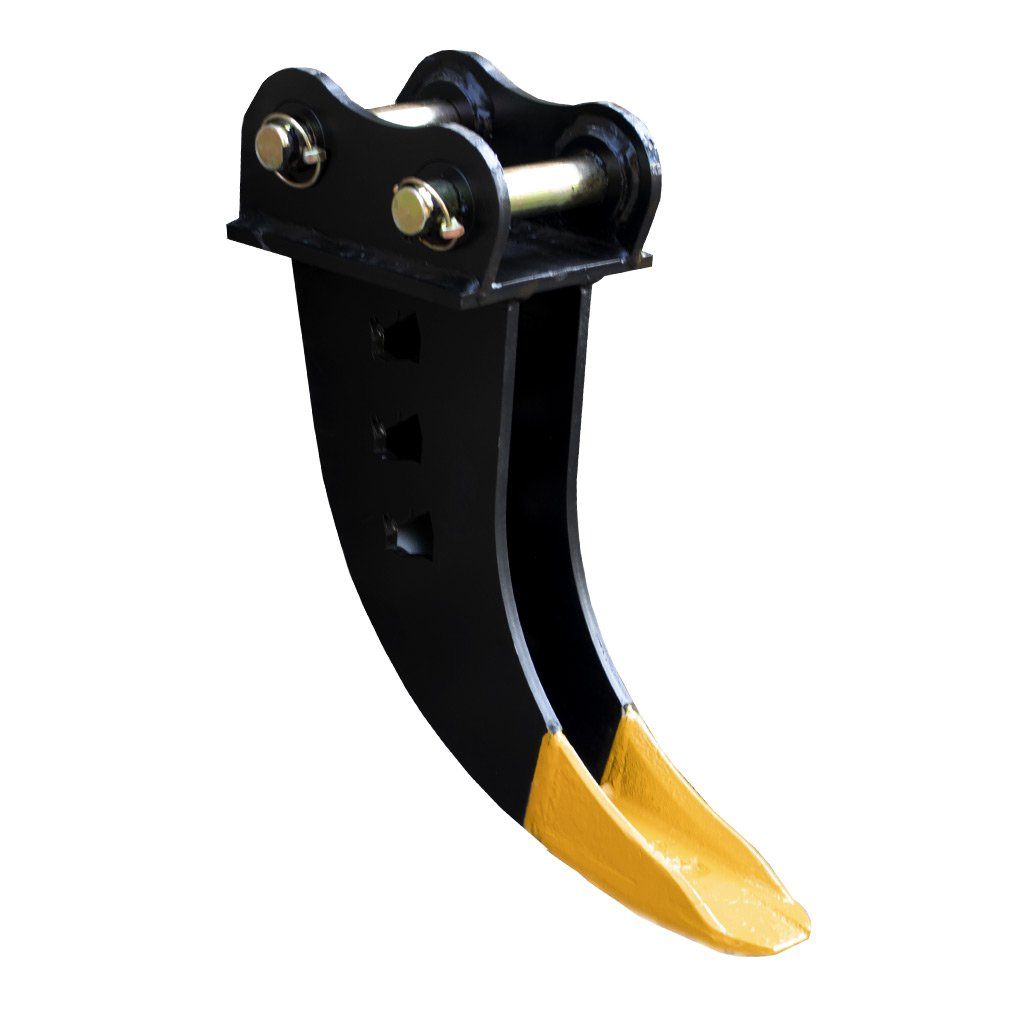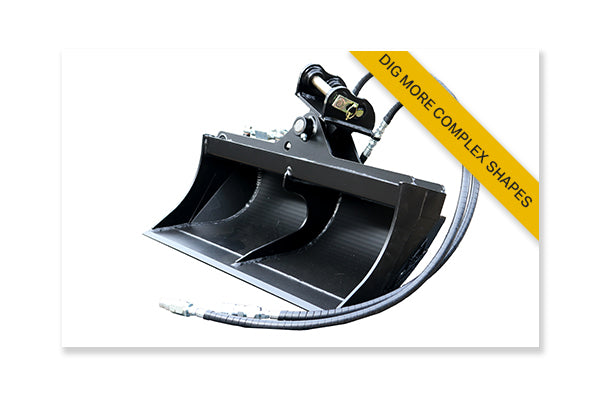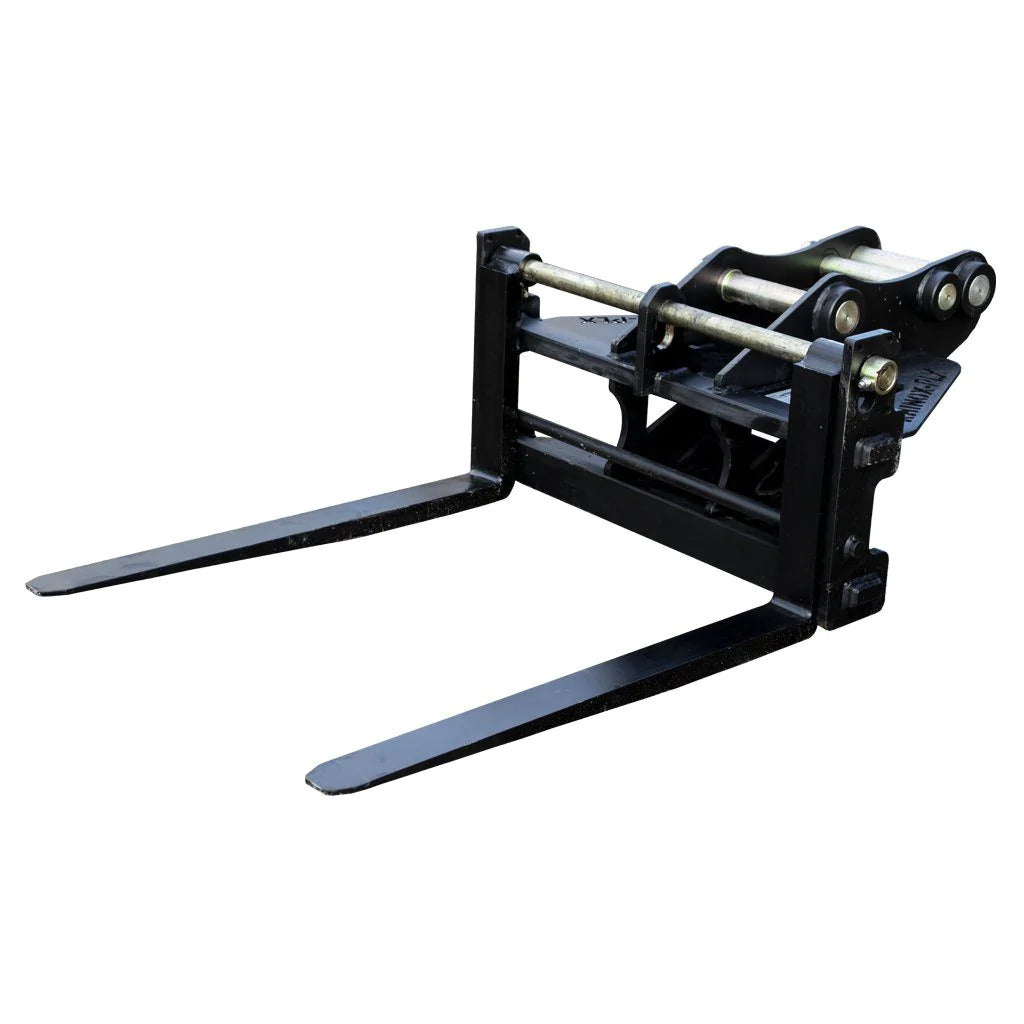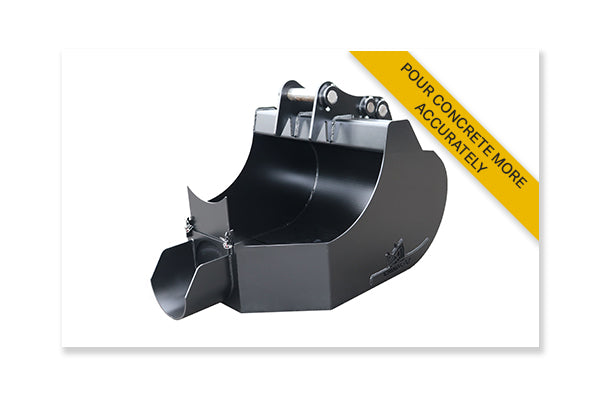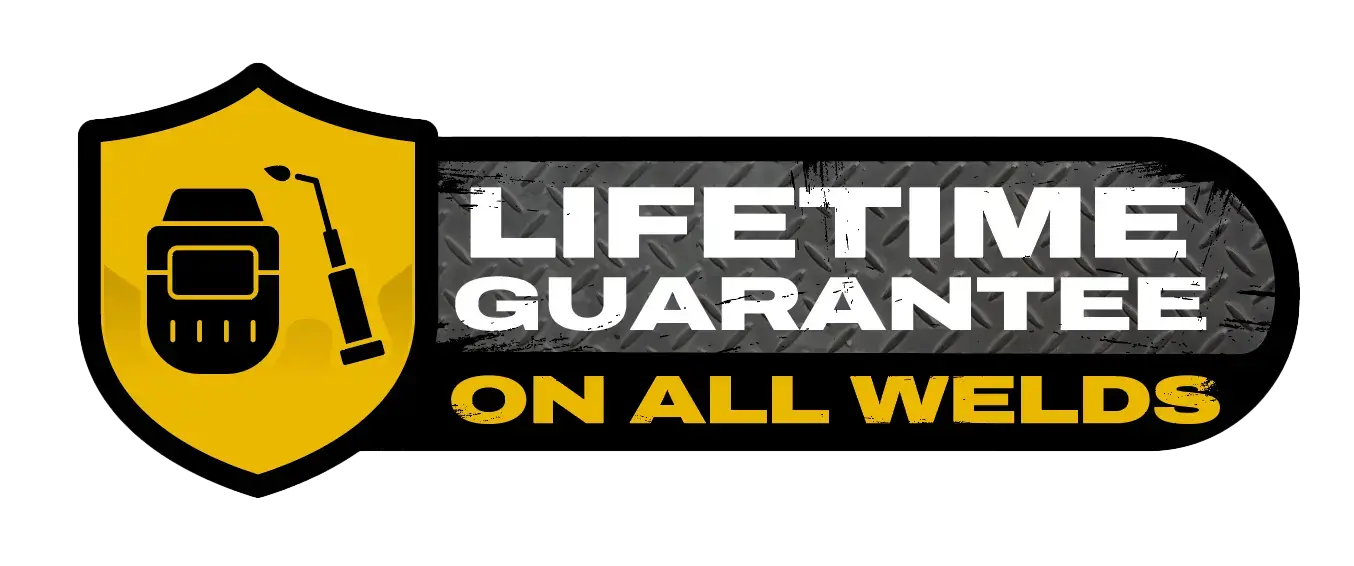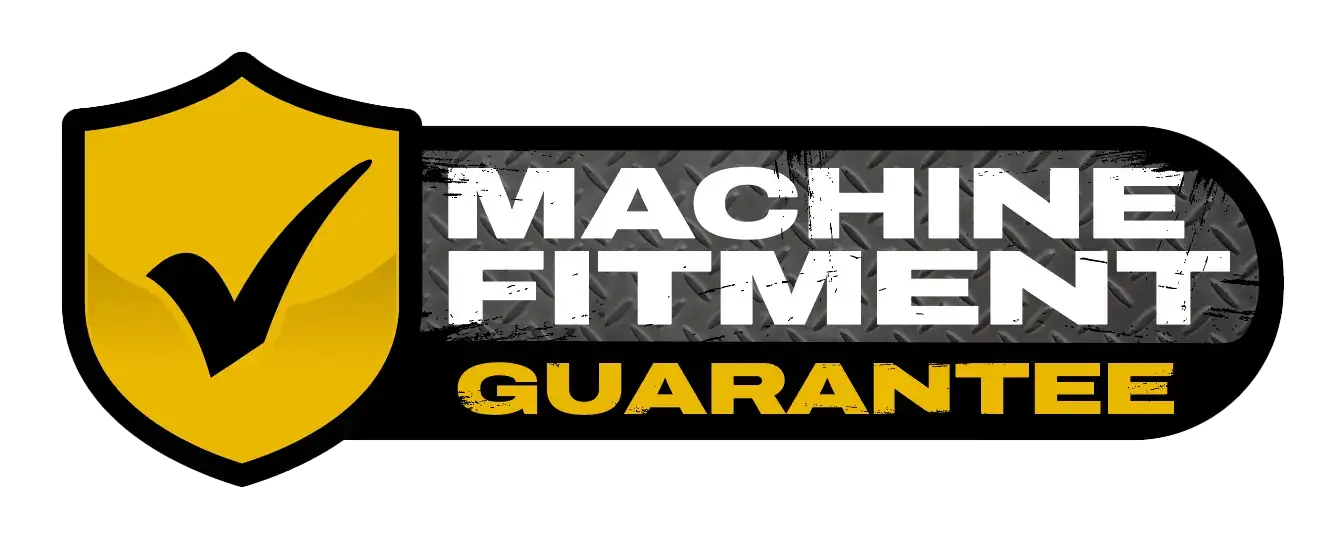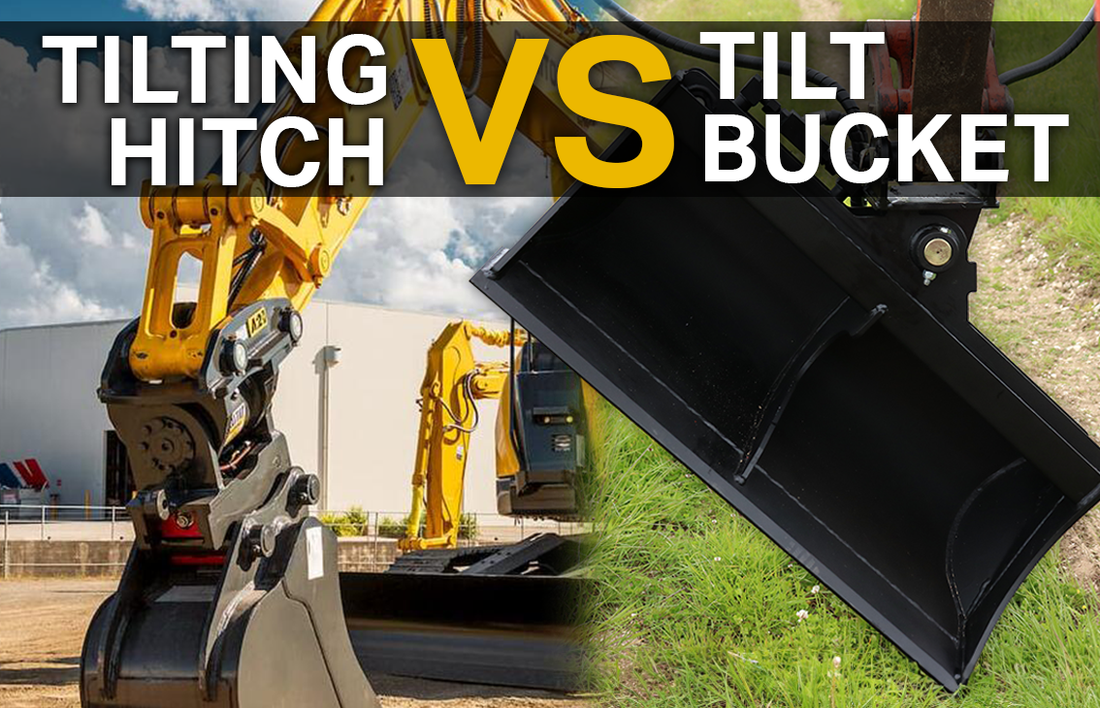
Tilt Bucket VS Tilting Hitch - What's best?
The ability to tilt your bucket is the key to flexibility on the job, but the choice between a tilting bucket or a tilting hitch is ultimately down to operator preference. In this blog post, we'll guide you through the benefits of both, shedding light on crucial factors such as price, versatility, required tilt and attachment change speed, to help you decide which is best for your applications.
Category |
Tilt Bucket |
Tilting Hitch |
|
|
|
|
Versatility |
One bucket only | Swap between different attachments |
Required Tilt |
Up to 45 degrees left and right (total of 90 degrees) | Up to 90 degrees left and right (total of 180 degrees). Potential for 360 degrees spin |
Attachment Change Speed |
Slow attachment changes | Rapid attachment changes |
Breakout Force |
Higher - if directly mounted | Lower - due to hitch height |
Price |
Cheaper | More Expensive |

Versatility
The biggest difference between the tilt bucket and the tilting hitch is that the tilting hitch is able to pick up and tilt a variety of attachments, like ripper teeth, digging buckets, land rakes or even pallet forks; compared to the tilting bucket that can only tilt the bucket that it's manufactured with. This means that your tilting hitch would be much more beneficial across a variety of projects as you'd be able to quickly swap between attachments as and when needed.

If your digger has limited auxiliary ports and you're looking to connect a hydraulically powered attachment, such as a hydraulic breaker, then using a tilting bucket will be your preferred option, as removing your tilt bucket will ensure that the auxiliary ports are available. Whereas, your tilting hitch would require the same auxiliary ports to be able to operate, meaning you would have to remove your tilting hitch prior to fitting your other hydraulic attachments in order to connect them to the ports.

Required Tilt
A tilting bucket is designed to tilt up to 45 degrees both left and right, providing a total tilt range of 90 degrees. On the other hand, a tilting hitch has the capability of tilting 90 degrees in either direction, resulting in a total tilt range of 180 degrees. The significant difference in tilting angles is a key consideration when deciding between the two. When a job demands a tilting angle over 45 degrees, the tilting hitch will be your essential option.
If you're looking for an attachment that is also capable of spinning your attachment up to 360 degrees, you need a rotating tilting hitch. It will allow you to spin your attachment 360 degrees, as well as tilt up to 90 degrees left and right. Tilt rotating hitches are most commonly used on construction sites or landscaping jobs where your digger is required to work in complex or hard to reach areas so the attachment can be positioned at the necessary angle to complete the job.

Attachment Change Speed
The time it takes to change attachments is dramatically different between a tilt bucket and a tilting hitch. The job of a quick hitch is to speed up your bucket and attachment changes as it eliminates the need to directly mount your attachments to the digger arm. A tilting bucket requires you to directly mount the attachment to the digger which can be a time consuming job, especially when the tilt bucket headstock moves freely which can make it more difficult to line up the dipper end between the hangers. This therefore makes attachment changes with a tilting hitch much quicker and easier keeping downtime to a minimum.

A downside of tilt buckets and the tilting hitch is the potential for hydraulic failings. There's always the potential that something can go wrong with the hydraulics of both these attachments, however one is considerably more complicated and time consuming to rectify. If there is a hydraulic malfunction with your tilt bucket, you can disconnect it from the machine and continue working by directly mounting your attachments. This is more complicated to do with a tilting hitch. They're usually plumbed into the excavator itself making it much more difficult to disconnect the hitch from the machine and continue working by direct mounting attachments. You would likely experience unavoidable downtime while the hydraulic issue is fixed.
On the other hand, extreme care must be taken when connecting and disconnecting your tilt bucket to avoid damaging the hydraulic hoses and fittings of the bucket when not in use. There is also a tendency for the hose couplings to build up pressure if exposed to varying temperatures which can make it more difficult to reconnect the attachment to your digger when required.

Breakout Force
Breakout force is the amount of force exerted by your digger when the arm is crowded in. This force determines how much power your digger can use to dig or lift material. A higher breakout force means that your machine has more power when crowding in. Breakout force is affected when the gap between the pins in your dipper end and the pins of your attachment is increased. For example, using a hitch on your digger increases the distance between the dipper end and the attachment which reduces the breakout force of your digger, therefore reducing the power of the crowd.
Due to the additional height, fitting a tilting hitch to your digger reduces the breakout force of your machine in comparison to directly mounting a tilt bucket. However in larger machines, the difference in power is usually not substantial enough to make a significant difference to the overall performance of your digger, meaning that the tilting hitch and tilt bucket will perform similarly when in use. As the machine size decreases, the difference in breakout force will become more noticeable, so this might be something you want to bear in mind.
Price
The final factor that will affect your decision of a tilt bucket or a tilting hitch is the price. The price of these attachments will vary between manufacturers but on average the tilting hitch is around 40% more expensive than the tilt bucket. This margin would allow you to purchase an additional attachment, alongside the tilting bucket, for the same price as the tilting hitch. So unless the advantages of the tilting hitch dramatically outweigh that of a tilt bucket, then the tilting bucket may be your preferred option.
To conclude, if you're unlikely to regularly change between attachments and don't have the need to tilt over 45 degrees, then the tilt bucket might be the best option for you. Alternatively, if you regularly switch between attachments and need to tilt over 45 degrees, then the tilting hitch could be your better choice.
For more information about hitches or tilting buckets, check out our content below:
 |
 |
 |

